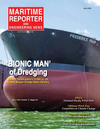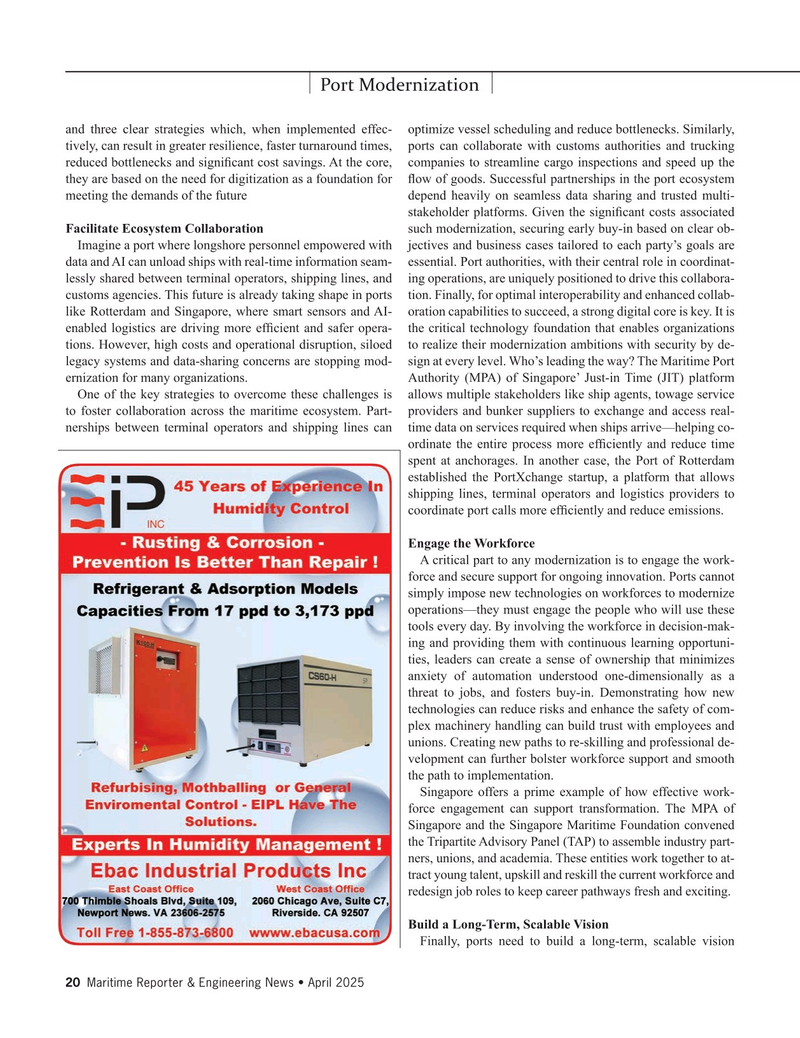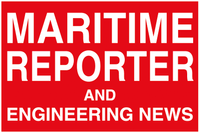
Page 20: of Maritime Reporter Magazine (April 2025)
Read this page in Pdf, Flash or Html5 edition of April 2025 Maritime Reporter Magazine
Port Modernization and three clear strategies which, when implemented effec- optimize vessel scheduling and reduce bottlenecks. Similarly, tively, can result in greater resilience, faster turnaround times, ports can collaborate with customs authorities and trucking reduced bottlenecks and signi? cant cost savings. At the core, companies to streamline cargo inspections and speed up the they are based on the need for digitization as a foundation for ? ow of goods. Successful partnerships in the port ecosystem meeting the demands of the future depend heavily on seamless data sharing and trusted multi- stakeholder platforms. Given the signi? cant costs associated
Facilitate Ecosystem Collaboration such modernization, securing early buy-in based on clear ob-
Imagine a port where longshore personnel empowered with jectives and business cases tailored to each party’s goals are data and AI can unload ships with real-time information seam- essential. Port authorities, with their central role in coordinat- lessly shared between terminal operators, shipping lines, and ing operations, are uniquely positioned to drive this collabora- customs agencies. This future is already taking shape in ports tion. Finally, for optimal interoperability and enhanced collab- like Rotterdam and Singapore, where smart sensors and AI- oration capabilities to succeed, a strong digital core is key. It is enabled logistics are driving more ef? cient and safer opera- the critical technology foundation that enables organizations tions. However, high costs and operational disruption, siloed to realize their modernization ambitions with security by de- legacy systems and data-sharing concerns are stopping mod- sign at every level. Who’s leading the way? The Maritime Port ernization for many organizations. Authority (MPA) of Singapore’ Just-in Time (JIT) platform
One of the key strategies to overcome these challenges is allows multiple stakeholders like ship agents, towage service to foster collaboration across the maritime ecosystem. Part- providers and bunker suppliers to exchange and access real- nerships between terminal operators and shipping lines can time data on services required when ships arrive—helping co- ordinate the entire process more ef? ciently and reduce time spent at anchorages. In another case, the Port of Rotterdam established the PortXchange startup, a platform that allows shipping lines, terminal operators and logistics providers to coordinate port calls more ef? ciently and reduce emissions.
Engage the Workforce
A critical part to any modernization is to engage the work- force and secure support for ongoing innovation. Ports cannot simply impose new technologies on workforces to modernize operations—they must engage the people who will use these tools every day. By involving the workforce in decision-mak- ing and providing them with continuous learning opportuni- ties, leaders can create a sense of ownership that minimizes anxiety of automation understood one-dimensionally as a threat to jobs, and fosters buy-in. Demonstrating how new technologies can reduce risks and enhance the safety of com- plex machinery handling can build trust with employees and unions. Creating new paths to re-skilling and professional de- velopment can further bolster workforce support and smooth the path to implementation.
Singapore offers a prime example of how effective work- force engagement can support transformation. The MPA of
Singapore and the Singapore Maritime Foundation convened the Tripartite Advisory Panel (TAP) to assemble industry part- ners, unions, and academia. These entities work together to at- tract young talent, upskill and reskill the current workforce and redesign job roles to keep career pathways fresh and exciting.
Build a Long-Term, Scalable Vision
Finally, ports need to build a long-term, scalable vision 20 Maritime Reporter & Engineering News • April 2025
MR #4 (18-33).indd 20 4/2/2025 8:56:26 AM

 19
19

 21
21
